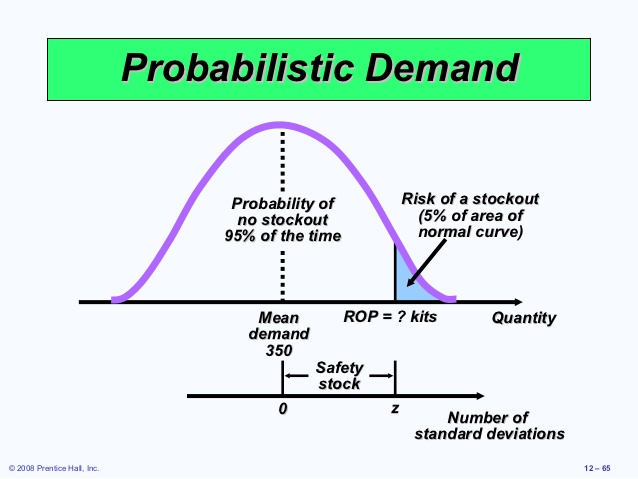Most demand forecasts are partial or incomplete: They provide only one single number: the most likely value of future demand. This is called a point forecast. Usually, the point forecast estimates the average value of future demand. Interval forecasts provide an estimate of the possible future range of demand (i.e. demand has a 90% chance of being between 50 – 100 units). Probabilistic forecasts take it a step further and provide additional information. Knowing more is always better than knowing less and the probabilistic forecast provides that extra information so crucial for inventory management. This video blog by Dr. Thomas Willemain explains each type of forecast and the advantages of probabilistic forecasting.
[inbound_button font_size=”20″ color=”#00a429″ text_color=”#ffffff” icon=”” url=”http://www.screencast.com/t/Ut4I5dOY8″ width=”” target=”_blank”]Watch Now[/inbound_button]
Point forecast (green) shows what is most likely to happen. The Interval Forecast shows the range (blue) of possibilities.

Probability Forecast shows the probability of each value occurring

Related Posts

Make AI-Driven Inventory Optimization an Ally for Your Organization
In this blog, we will explore how organizations can achieve exceptional efficiency and accuracy with AI-driven inventory optimization. Traditional inventory management methods often fall short due to their reactive nature and reliance on manual processes. Maintaining optimal inventory levels is fundamental for meeting customer demand while minimizing costs. The introduction of AI-driven inventory optimization can significantly reduce the burden of manual processes, providing relief to supply chain managers from tedious tasks.

Daily Demand Scenarios
In this Videoblog, we will explain how time series forecasting has emerged as a pivotal tool, particularly at the daily level, which Smart Software has been pioneering since its inception over forty years ago. The evolution of business practices from annual to more refined temporal increments like monthly and now daily data analysis illustrates a significant shift in operational strategies.

Constructive Play with Digital Twins
Those of you who track hot topics will be familiar with the term “digital twin.” Those who have been too busy with work may want to read on and catch up. While there are several definitions of digital twin, here’s one that works well: A digital twin is a dynamic virtual copy of a physical asset, process, system, or environment that looks like and behaves identically to its real-world counterpart. A digital twin ingests data and replicates processes so you can predict possible performance outcomes and issues that the real-world product might undergo.












